No Interrupting Peter Thiel: Zero to One
By The Economic Development Curmudgeon
So who is Peter Thiel and why is his book helpful to economic developers? Thiel co-founded Paypal (also its CEO) along with Max Levchin, Elon Musk and five other super-entrepreneurs. He was an early investor in Facebook and Airbnd, a funder of the venture capital firm, Founders Fund–and a former chess grandmaster. He founded/ sold Paypal and founded several venture capital companies–and then for good measure started yet another innovative company, Palantir. With a net worth in excess of $2 billion he is regarded as one of the Silicon Valley’s most successful–and certainly well known investors.
He wrote his second book, Zero to One in 2014. This review hopefully summarizes some observations relevant to an economic developer. If entrepreneurialism, venture capital, and tech start up are your thing–this is exactly the kind of info you need to help evaluate proposals, perform due diligence on applications, understand tech business plans, and in general, familiarize yourself with technology business formation. Otherwise, this book can be a great crib sheet to follow the TV hit “Silicon Valley”. It is alleged by some that Thiel is the inspiration for the show’s character, Peter Gregory.
Thiel opens the window to that technology business formation infrastructure just a wee bit.
Technology Start ups should be “Vertical” not “Horizontal”
This book defines start ups in such a way as to limit them to vertical “technology” vehicles. This is not a book on “horizontal” start ups. Ye gads what is he talking about? First of all one must wade through some “meaningful babble” which defines technology (producing miracles) as innovation and innovation as Progress. Therefore arriving at the conclusion that to succeed the business must do new things (pp. 10-11) rather than copy, imitate, or modify what already exists. “Doing what we already know how to do takes the world from 1 to n …. But every time we create something new, we go from 0 to 1. (p. 1). Progress (technology-based innovation) can take one of two forms: Horizontal progress means copying things that work–going from 1 to n. Unless they invest in the difficult task of creating new things, American companies will fail in the future no matter how big their profits remain today. Vertical progress means doing completely new things–going from 0 to 1. Thiel’s book revolves about Vertical Progress. This is as clear as mud. What is he getting at?
In a philosophy class one makes these confusing and obscure distinctions all the time–that is why philosophy is so popular. Thiel is a Stanford philosophy major–with a law degree to add to the babble. Nevertheless, it is important the reader understands the distinctions being made, because Thiel is defining a specific type of start up, a specific type of business plan, and a specific way to evaluate these specific start ups. Thiel is not talking about the run of the mill technology start up which takes something already existing and makes it cheaper, better, faster, lighter, or more accessible. He is defining innovation, progress, and technology only as those start ups which do something brand new–i.e. go from 0 to 1. Why should we care?
I think there are two reasons. (1) Thiel grapples with linking technological innovation to a business plan which can capture venture capital funding and attain future commercial success. (2) Inadvertently perhaps, Thiel also is attempting to provide a long-needed definition of innovation and technology that separates out green colored-one quarter pound lighter smart phones from “innovation” or creativity. Much of what passes for innovation is marketing hoopla and ideological partisanship. Rather to Thiel truly innovative technology is restricted to vertical Zero to One start ups–what we used to call “platform” innovations (the semiconductor chip or microprocessor, the gasoline-powered combustion engine, the search engine) which can serve many different sectors, products and industries. The need for a better, restricted definition of technology and innovation which makes the terms meaningful and not a faddish buzz word (for example, sustainable) is to me essential if most of the creative destruction mythology congruent with innovation/technology is to have any meaning as elements in making effective public policy.
So Thiel is concerned only with vertical, 0-1 start ups/entrepreneurs in which every innovation is new and unique. No authority can prescribe in concrete terms how to be innovative. Indeed, the single most powerful pattern I have noticed is that successful people find value in unexpected places, and they do this by thinking about business from first principles instead of formulas. (pp. 2-3). This kind of entrepreneurialism can’t be taught by anyone–it just happens to particular individuals in serendipitous ways which defy personality traits, skills, and organizational structure. The organizational structure essential to vertical 0-1 innovation is a small start up: “New technology tends to come from new ventures–start ups. … The easiest explanation for this is negative: it’s hard to develop new things in big organizations, and its even harder to do it by yourself.(p. 10). … Positively defined, a start up is the largest group of people you can convince of a plan to build a different future. A new company’s most important strength is new thinking… “(p. 10).
Business Plans Do Matter for Vertical Start Ups
First of all, Thiel rejects the business plan paradigm currently taught at most universities and most small business counseling centers. He says we learned the wrong lessons from the 2001 technology bubble bust. The incorrect current paradigm advocates wrong lessons such as: (1) make incremental advances (2) stay lean, unplanned, tactical and flexible (which translates into “go lite on the planning”) (3) improve on the competition–build a better mousetrap (4) and focus on the product, not the sales (technology is about product development, not advertising). Thiel reverses all of these. Rather, Thiel asserts (1) it is better to risk boldness than triviality (2) a bad plan is better than no plan (3) competitive markets destroy products and (4) sales matters just as much as product. Thiel, remember, is making the case for his vertical start up–the issue as to whether the current paradigm fits horizontal start ups is not considered.
The foundation question which should guide a vertical start up entrepreneur is “What valuable company is nobody building?”(p. 23). He contrasts an airline which produces hundreds of billions of sales, but hardly any profit, with a Google which has much less sales but lots more profit. The difference between the two is that airlines compete with other airlines, Google doesn’t really compete with anybody. For Thiel the vertical start up should be a monopoly defined as a company “that is so good at what it does that no other firm can offer a close substitute” (pp. 24-25). This is not the definition conventionally used by economists. His advice “if you want to create and capture lasting value, don’t build an undifferentiated commodity business (p. 25)”. ” A creative monopoly means new products that benefit everybody and sustainable profits for the creator” p. 35).
Instead Thiel argues we preach against monopolies because we have made “an ideology” of competition and portray monopoly as evil. “Competition is an ideology–the ideology–that pervades our society and distorts our thinking” (p. 35). The entrepreneur mindset which seeks to counter competitors is, unfortunately, natural, an inevitable animal spirit associated with entrepreneurism–but it must be overcome. The presence of competitors in one’s market distracts the entrepreneur for concentrating on growth. So Thiel concludes that competition is in human nature, but is destructive to establishing a monopoly. The entrepreneur and his business plan ought to seek to develop an idea/technology for which there is no competition.
Arguably, this is the assertion that has captured most media attention–the principal lesson entrepreneurs should get from Zero to One. Leaving aside our discussed issue that obviously creative monopolies run counter to any horizontal start up, this notion of monopoly may have some holes in it. Assuming a creative monopolistic start up gets going and is successful, (1) why will it be successful in restricting horizontal competitors and thus sustain its monopoly over time; and (2) if it is successful in restricting horizontal competitors why wouldn’t that monopoly acquire the negative behaviors commonly associated with monopoly?
Let’s deal with the second issue first. Thiel agrees that monopolies would eventually abuse their position–except that new monopolies will eventually arise, shuffle the deck, and displace the old monopoly. As proof, he offers the tale of ATT, which was superseded by by IBM, followed by Microsoft, followed by Apple. For Thiel there is an long-term societal-economic check and balance involving a series of future creative monopolies which check the older creative monopoly and replace it. To repeat, he is not unduly worried about creating a monopoly.
All sorts of thoughts arise at this point. (1) Each of the older creative monopolies he lists are still around and are now horizontal firms–I am not sure where we go with that? Indeed, his creative monopoly, Paypal, today a subsidiary of EBay, is a horizontal company–competing with several alternatives, such as bitcoin, Alibaba and others. Why is it that overtime vertical monopolies become horizontal? ( 2) At any one point in time, society and the economy must deal with a monopoly and live with its behavior. I am uncertain that temporary abuse by a temporary monopoly should make society feel better? (3) If monopolies are ultimately to be checked by future monopolies, why is the rise of a future monopoly inevitable or at least timely? Why must monopoly business formation flow on some sort of predictive time frame–couldn’t there be considerable lags for all sorts of reasons in the next monopoly?
Worse, if any monopoly knows a future monopoly can overthrow its rule, why not do what one can to prevent a future challenger from rising–like drying up financing, or establishing an theoretical religious orthodoxy which inhibits/kills future creativity? Despite the media hoopla about monopoly start ups, Thiel needs to flesh it out better.
How to Measure a “Great Business”: Due Diligence
For those who do not specialize in business plans and pro forma due diligence early stage start ups are impossible to numerically and even financially evaluate. Contrary to their media image, venture capital firms don’t touch early stage start ups–and Thiel certainly does not. Economic developers see first stage start ups. Our success is getting them to the point they can attract later stage investment by angels and VC. For economic developers, the hand-off to later stage investors is critical. I will deal with that topic shortly. Suffice it to say, start up-focused economic development programs are quite risky and potentially damaging to an public/non profit/university economic developer. Frankly, for those making investment decisions there is little cover if the investment goes wrong–and that provides grist for the mill of any media/academic who wants to make a point. Nevertheless, evaluating business plans and start up pro forma can be a part of an economic developer’s job. What advice does Thiel offer in this noble endeavor?
Thiel defines a “great business” as a start up with a monopoly that is able to generate cash flows far into the future. Profits in the near-term are less important in the valuation a vertical monopoly: “the value of a business today is the sum of all the money it will make in the future” (p.44). Technology companies “often lose money for the first few years; it takes time to build valuable things, and that means delayed revenue” (p. 45). This means his message is profits matter less than projecting cash flow–and that means creating sales and cost of sales estimations for years out. If the reader asks why these numbers have any integrity or predictive value, I frankly don’t have a clue. But in the Venture Capital world they do. If you believe in this innovation thing, you just have to drink the water without asking questions.
Accordingly, discounted cash flows are key to valuing a technology start up business model. Citing his experience with Paypal and LinkedIn, Thiel demonstrates that discounted cash flows can be achieved literally decades after their IPO. Again, I hesitate to bring up the calculations involved in making assumptions that, in effect, predict market demand/corporate costs over a generation–but Thiel must believe current methodology allows for such calculations. Indeed, he argues that to worry about how well a technology start up does in the short term is nothing less than “measurement mania“.
To say that I am skeptical is an understatement. To me this belongs in the realm of egotistical assertion. That this may be the approach followed by many Silicon Valley venture capital and angel investors may well explain the absurd valuations that characterize recent IPOs and technology start up financing packages. If so, sooner or later this bubble will burst. Profits do matter and (unlike Amazon) they better come sooner than a generation later.
Fortunately, Thiel moves on to more solid criteria for evaluating future technology start up performance. These below four criteria describe the salient “qualitative characteristics of your business” (p.47). (1) Proprietary Technology (Google’s search algorithms, short page load times, “autocompletion [which he says] adds to the core search product’s robustness and defensibility” [or] “superior integrated design” (p. 48-49). Somehow, I wonder if the typical economic developer is conversant with any of these terms. Moreover, the proprietary technology must be 10X better than your nearest competitor. I am sure that is easily determined as well.
(2) The concept Network Scale Effects translates into getting a herd to buy your product or acquire your service because if you don’t–well.. you’re not cool.The key to achieving network effect scale is to start small (Zuckerberg (Facebook) started only with Harvard students) and build up over time. This “start small and build over time” strategy means technology business plans are inherently dependent on network scale and inevitably must have very weak conventional pro forma. Also if network scale is to occur the start up must indefinitely develop ever larger market demand–which require yet additional monies (causing dilution of early investors);
(3) Economies of Scale: because one can average out of fixed costs, scaling up is necessary to establish a monopoly–no kidding–this is hardly new stuff here. Brick and mortar to scale up require significant investment and invite dilution–but technology firms using Internet only add a few low cost features; (
4) Branding–the weakness of branding is that substance or quality product must first exist if branding is to work. Yahoo is a case where substance didn’t exist and all the stylistic coolness of Melissa Mayer could not make it a brand success. The ability to brand, of course, occurs in the future–and is management dependent.
Applying these four criteria to business plans and financial pro forma can be no easy matter. Evaluating start up business plans should not be attempted by those with little industry experience, technical knowledge or who possess only amateur egos. Anyone making such judgments on these four criteria really ought to know what they are doing–or the complete opposite.
In my mind, this is a completely new form of due diligence which, of course, corresponds very little to conventional banking-loan due diligence. Zero to One AND START UPs personify Risk! Are these criteria fairly relevant to horizontal start ups as well? Perhaps. But the more glaring deficiency is that Zero to One start ups pretty much must be internet and software start ups.
Don’t Disrupt–Originally disruption meant using technology to introduce a low-end product at a low price, and subsequently improve the product over time, eventually overtaking the premium product (p.56). Today this expression has mediaized into a trendy new buzzword. People using the word disruptive nowadays usually pick fights, follow the entrepreneur’s ego and cater to headlines (Napster). Thiel observes that a strategy using the original meaning of disruption creates a weakness in that your creative monopoly is,in effect, benchmarking another company. What the Zero to One start up really wants to do is be creative and go down its own road.
Finally, moving into a particular market is a tactic–not a goal. Indeed being first can mean first mover advantage in that you quickly capture significant market share while competitors scramble. BUT, remember, durability is when you most capture the most sales and establish a monopoly. So the trick is not to move first, but be the last–make the last great technology leap that crushes your competition–not the first. This is a true contrarian business plan and one that greatly depends on management to come up with that last great leap that leaves the others in the dust and establishes the monopoly. That works on the TV show Silicon Valley, and it also works well “in your dreams”. Let’s try it in real life–oops sounds like “Shark Attack” (CNBC).
The Importance of the Entrepreneur
Thiel asks do entrepreneurs need to be lucky or skillful? Successful entrepreneurs often say it’s luck, but “serial entrepreneurs” suggest there is some skill involved as well. Probably the answer, he concedes is unknowable–but he clearly suggests that successful entrepreneurs can to some degree create their own luck. Quoting Emerson “Shallow men believe in luck, believe in circumstances … Strong men believe in cause and effect” (pp. 60-61). If you expect the future to be random, it’s hard to argue you can overcome it. But if there is some ability to control the future, that is another matter. Entrepreneurs need to believe they can make their future! Without a sense of the future you want to create, you cannot plan and if you cannot plan, you cannot make a pretense of shaping your future. Thiel strongly believes that “character”, “resilience”, and “optimism” must exist in a technology entrepreneur–they cannot be created. These character traits must be real and must come naturally.
Thiel’s Judgment Regarding Public Venture Capital
Thiel’s take on “clean tech” or green technology start ups obviously is quite relevant to economic developers. Thiel, the reader must appreciate, is an acknowledged libertarian conservative Republican. He is not, however, anti-environment, or a climate change denier. He does, however, harshly criticize the performance and the viability of the clean tech firms which have received public financing and venture capital. It is no secret that Solyndra failed, but, according to Thiel, forty publicly-financed solar manufacturers also went bankrupt in 2012 alone.
For this and other reasons Thiel’s Chapter 9 is very relevant to economic developers. Over the last decade or so, more metropolitan areas have developed a venture capital-like entity to supplement their innovation and cluster strategies. For the most part, after all, we are from government, a university or a government-supported non profit–and we here to help. Thiel labels this form of venture capital “social entrepreneurship (p.165). “This philanthropic approach to business starts with the idea that corporations and nonprofits have until now been polar opposites: corporations have greater power, but they’re shackled to the profit motive; non profits pursue the public interest, but they’re weak players in the wider economy. Social entrepreneurs aim to combine the best of both worlds and ‘do well by doing good’. Usually they end up doing neither” (p. 165).
The reason economic development “social” entrepreneurship does so poorly, Thiel argues, is not simply the “ambiguity between social and financial goals“, but more the reality that the start ups targeted for social entrepreneurship are selected because a consensus has developed that these firms/sectors are prime, or growing the most, or offer the most benefits to society. The targeting behind social entrepreneurship is herd-like. Unintentionally perhaps, the hundreds of competing metro programs attempt to create early stage technology firms in a handful of target sectors which some study has indicated possess either/both a great multiplier or occupational/job potential. Largely beyond the ken of any single firm or metro technology program, the cumulative effect of these programs results in a hyper-competitive venture capital market. This hyper-competitive social entrepreneurial market produces many, many competing plans for VC to consider, and it certainly runs counter to Thiel’s 0-1 approach to venture capital .
“The truth about clean tech is more important and complex than government failure. Most clean tech companies crashed because they neglected one or more of the seven questions that every business must answer” (p. 153). The seven questions are: (1) Can you create breakthrough technology instead of incremental improvements; (2) Is now the right time to start your business: (3) Are you starting with a big share of a small market (do you have a monopoly); (4) Do you have the right team; (5) Do you have a way to not just create, but deliver your product; (6) Will your market position be defensible 10 and 20 years in the future; (7) Have you identified a unique opportunity that others don’t see (p.154). Thiel’s seven questions are worth asking of any firm seeking an equity injection–even if many questions are “wild ass guesses” about future market demand and costs. But asking the questions, I think, ought to induce a bit of humility–a serious, not rhetorical, recognition that considerable complexity, technological expertise, and uncertainty underscore this economic development strategy. This technology/innovation stuff is too often portrayed in the literature as a sure thing, inevitable, and inherently going to work. That will come back to haunt economic development because its just not true.
Thiel asserts that this hyper-competitive, artificial start up market is most evident in urging entrepreneurialism to focus on “green” end-products. To Thiel, this concentration on green isn’t just herd-like, it’s a stampede which compels mediocrity that tramples the Zero to One firm. “(H)undreds of undifferentiated products all in the name of one broad goal…. The best projects are likely to be overlooked, not trumpeted by a crowd; the best problems to work on are often the ones nobody else tries to solve” p. 166).
An entrepreneur can’t benefit from macro-scale insight [Internet, the Cloud, Green, Alt Energy, Technology, Advanced Manufacturing, Cyber-Security, Data Storage] unless his own plans begin at the micro-scale …. no matter how much the world needs [the right kind of] energy, only a firm that offers a superior solution for a specific energy problem can make money. No sector will ever be so important that merely participating in it will be enough to build a great company … a valuable business must first start by finding a niche and dominating a small market …. Paradoxically, the challenge for the entrepreneurs who will create Energy 2.0 is to think small. (pp. 170-171)
Instead, public, university, and accelerator programs are likely to create an excess of competitive start ups in a very few targeted sectors/ hot products, etc. This reflects what Thiel calls the “spray and pray” approach to venture capital investing. We create portfolio’s of start ups in our programs fully expecting most will not make it and the one or two that will are so successful that the VC recoups their investment. That means across the nation hundreds of non profit, public and university portfolios, hoping for the Zero to One success, invest in thousands of losers. How this results in metropolitan revitalization is not clear to me. If Thiel is correct, the goal is to assist only start ups with monopoly-like markets; small markets which can be dominated by a single firm which can grow the market over time. In some sense, it could be argued that the graduates of public/university programs can serve limited regional markets and thus can utilize Thiel’s Zero to One approach. The flaw, or at least the obstacle, comes in growing the market into other regions with potential regional competitor–the issues of scale and unresolved competing technologies, critical to Thiel, can artificially complicate the evolution of the technology and innovation.
Is Thiel for You?
I like Thiel’s approach and book–but it doesn’t work well for most economic developers. This approach fits into the Silicon Valley-like world of big name entrepreneurs who made their fortunes and have now become moguls in the Valley and venture capital world. The principles offered in this book fit the small closed world of well-connected last stage venture capital with clear IPO potential. The approach Thiel describes fits best with firms that have already scaled their product and developed a successful company. This small closed world is tightly knit and geographically concentrated–immensely affluent, and reflective of last month’s Kotkin Clerisy.
Still many of his observations are interesting and worth-while to think about. My core criticism is the Zero to One approach is held together chiefly by Thiel’s ego and his cult-like following that drools with his every word (or lusts after his every dollar). How a normal human being can identify a 0-1 company consistently at an early stage is beyond me. How can anyone possibly “value” (determine the long-term worth that will be generated over twenty or thirty years) such a firm? There is no possible valuation methodology or metric that can predict the future–other than simple projection of assumptions (Malthus did that, remember). Is timing, which is critical in his approach, knowable? Even in regards to his core concept, monopolistic control over the firm’s market, Thiel’s examples defy gravity. PayPal, if it ever enjoyed a monopoly, has long since lost it. Are Apple, Google, Amazon and Netflix monopolies? Tell that to the stock market. He cites Uber as the next greatest monopoly. We’ll see. These are assertions–and the penguins follow in a line behind him. If my name were on the book no one would pay any attention to the advice in the book–given that my cult consists of two perpetually hungry cats. More than anything, economic developers cannot easily apply Thiel because they live in a world of horizontal start ups–except arguably in the life sciences sector. From the economic development perspective, there is nothing wrong about creating jobs by forming and assisting horizontal firms. That horizontal firms square poorly with our rhetoric and professional literature is another matter.
But frankly, horizontal firms, exuberance, hubris and simple arrogance aside, if one grants him his verbal extravagance, Thiel does makes one think.
So on the positive side, Thiel admits that failure in a start up is much more likely than success. Whenever I read anything in the economic development literature about business formation, innovation, and entrepreneurship I never read about failure–and the consequences of failing–on the entrepreneur, her family, and employees. At least Thiel brings it up and mentions how devastating failure can be. Secondly, Thiel, by assuming the future is knowable and measurable, forces one to realize that start ups are about the future–and the future is means risk and uncertainty. His insight is that the true entrepreneur ultimately gets paid to assume the risk of the unknowable, largely through self-delusion, a can-do optimism, and ego. This makes the entrepreneur weirdly different than the rest of us and frankly raises the issue as to whether one can teach or learn how to be an entrepreneur. The entrepreneur actually believes her “charge of the light brigade” will be successful and she is able to convince her team to follow. Frankly, I’ve seen worse job descriptions for an entrepreneur. Finally, Zero to One points out a different skill-set vital to venture capital due diligence. Thiel’s critique of public venture capital programs is perhaps his most germane lesson. The public and private venture capital worlds are quite different and how they fit and relate to each other is, in my mind, very unclear.
How this fits into a SBIR, MEP, or the university accelerator program is not immediately obvious. I suspect they live in two different worlds, and as I have pointed out, that is its own problem. I recommend the book to an economic developer precisely because it challenges her into a new way of thinking about start ups and it questions our conventional principles about young companies while supporting some very important traditional principles such as the key to effective entrepreneurship is the company-TEAM. It suggests that simple “spray and pray” has its drawbacks and that the hand-off to later stage investment requires crossing over to another world entirely. Or if you prefer, Thiel’s Zero to One makes HBO’s Silicon Valley even more hilarious.

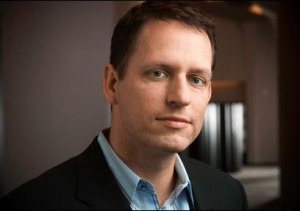
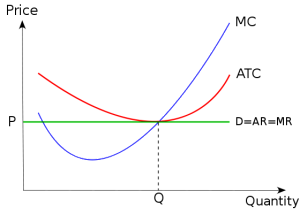


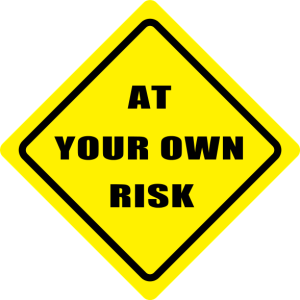

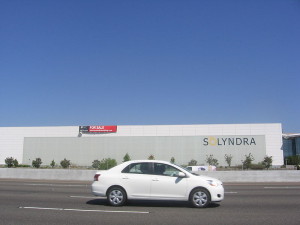

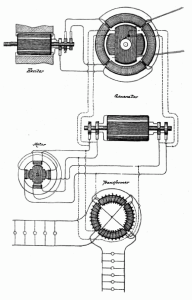
Comments
No comments yet. You should be kind and add one!
The comments are closed.